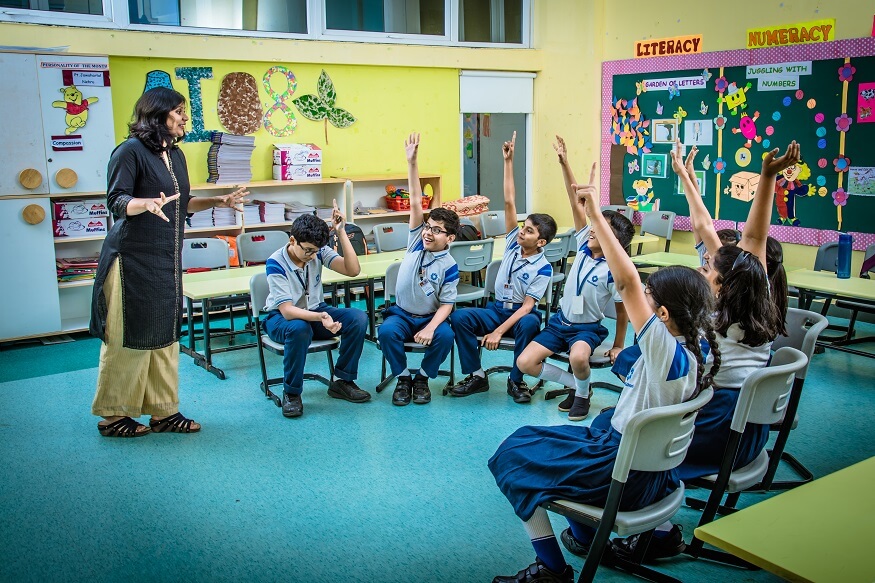Why do we as humans talk? Because talking is an important conversation that gives us social support. Having a strong social network improves mental health. Whether we talk to a relative, a friend, or a colleague it simply helps, the conversation could be to give advice, or share information, or just to vent, this entire process helps us to put things in perspective, which in turn helps us to build resilience and cope better when things do not go as planned.
Conversation skills play a vital role in a child’s development and well-being. Engaging in conversations helps children make friends, feel listened to, express their needs, and foster strong relationships with others. When children interact with their peers, they start gaining insights into different perspectives, realizing that others may hold diverse opinions, thoughts, and feelings.
But today we will discuss specifically about the talking circle. The talking circle indigenous or the history of talking circles is very fascinating. Particularly tribes in the Midwest originated talking circles, also known as peacemaking circles, which belong to the traditions of indigenous people. Circle processes believe in equality among participants and the leader, to share power with each other instead of having power over one another. As history tells us, people developed speaking circles, also known as talking circles, in the late 1970s. People found it easy and successful to codify methods for addressing and speaking about one’s own experience related to stage fright.
Also, indigenous people deeply rooted the history of talking circles in their traditional practices, known as healing circles. Many tribes practiced and widely used the indigenous talking circle. People used to gather in a talking circle indigenous or healing circle, where they arranged themselves in a circular formation, often with a circle leader officiating the gathering. This provides us with a lot of information about the history of talking circles and helps us better understand today’s topic.
Talking circles are used for problem-solving discussions and to improve decision-making skills. The basic purpose of a talking circle is to create a non-judgmental and safe place where every person has the opportunity to contribute to the discussion of difficult and important issues. Bearing in mind the benefits, this method was introduced to educational institutes. The purpose of talking circles in classrooms is usually meant to demonstrate that every participant is connected and that every child in the circle has an equal voice.
The talking circle strategy involves a teacher constantly facilitating an elaborated forum and some open-ended discussions as a conflict resolution strategy in order to coach students through a problem-solving conversation with all the other classmates. The teacher invites the participating students to the conversational area of the classroom to join the talking circle.
Similarly, there is a learning circle, which is a group of students with a common interest who meet regularly to learn from each other and learn about a self-identified topic in a format the group has decided upon. Thus, helping students to have peer-directed and flexible learning experiences. The talking circle fosters deeper listening and reflection in conversations; it also prevents reactive communication and promotes direct responsive communication. There are different types of discussion circles. Mainly, there are three types of talking circles:
Types of Talking Circles
- Talking Circles
- Sharing Circles
- Healing Circles
The term talking circle is sometimes used interchangeably with sharing circle, where the protocols for usage completely depend on the sole purpose. A circle usually signifies places where people come together, such as a fireplace at a campsite, a ceremonial site, or a meeting place.
The four steps in the talk strategy are Think, Show, Tell, Talk, which is a useful strategy for promoting language and vocabulary development. Before we learn about this strategy, let us reflect on why it is important to incorporate vocabulary and language instruction into the classroom.
There are several talking in circles activities. These are very fun and challenging games that require a lot of communication and coordination among the teammates. So let us have a look at some talking circles in the classroom activities.
- The teacher instructs the kids to stand in a circle around a long piece of string tied at the ends to form a circle. Then, the teacher asks them to create shapes with the string such as a square, triangle, the figure 8, a rectangle, and many more. To increase the level of difficulty in the game, the teacher can blindfold the kids or ask them to make difficult shapes.
- Sitting in a circle, each child gets a turn to spot something in the room that has a circle shape on it. They use descriptive language to give clues and allow the others to guess the object.
Among the numerous activities, some are successful in developing speaking skills for students such as:
- Role play activities.
- Discussion activities.
- Debates.
- Picture describing.
- Storytelling.
- Interviews.
- Simulations.
- Information Gap.
- Brainstorming.
- Mock Interviews.
- Story Completion.
Usually, a content-based lesson, such as a discussion, can be held for various reasons. And role play is one way of getting students to speak fluently. Similarly, some activities that promote speaking through talking circles in the classroom are easily available online for reference.
To avoid the hassle of kids speaking in between, the 4-3-2 method can be used by the teachers. This technique urges students to speak about the same thing three different times, each time for a different length of time: 4 minutes, 3 minutes, and 2 minutes.
By doing so, the students learn to accelerate the way they speak. In other words, students repeat the same speech three different times with different durations. Teachers can teach students to introduce a topic and prepare relevant vocabulary and give them time to prepare. They can also encourage group work by dividing students into groups or pairs. Kids practice speaking by giving them the opportunity to speak for four minutes without interruption, while the others actively listen. By this teachers can ensure every student has an equal voice in a classroom and they know that their thoughts and opinions are valued.
Enrol your child with EuroSchool today!










